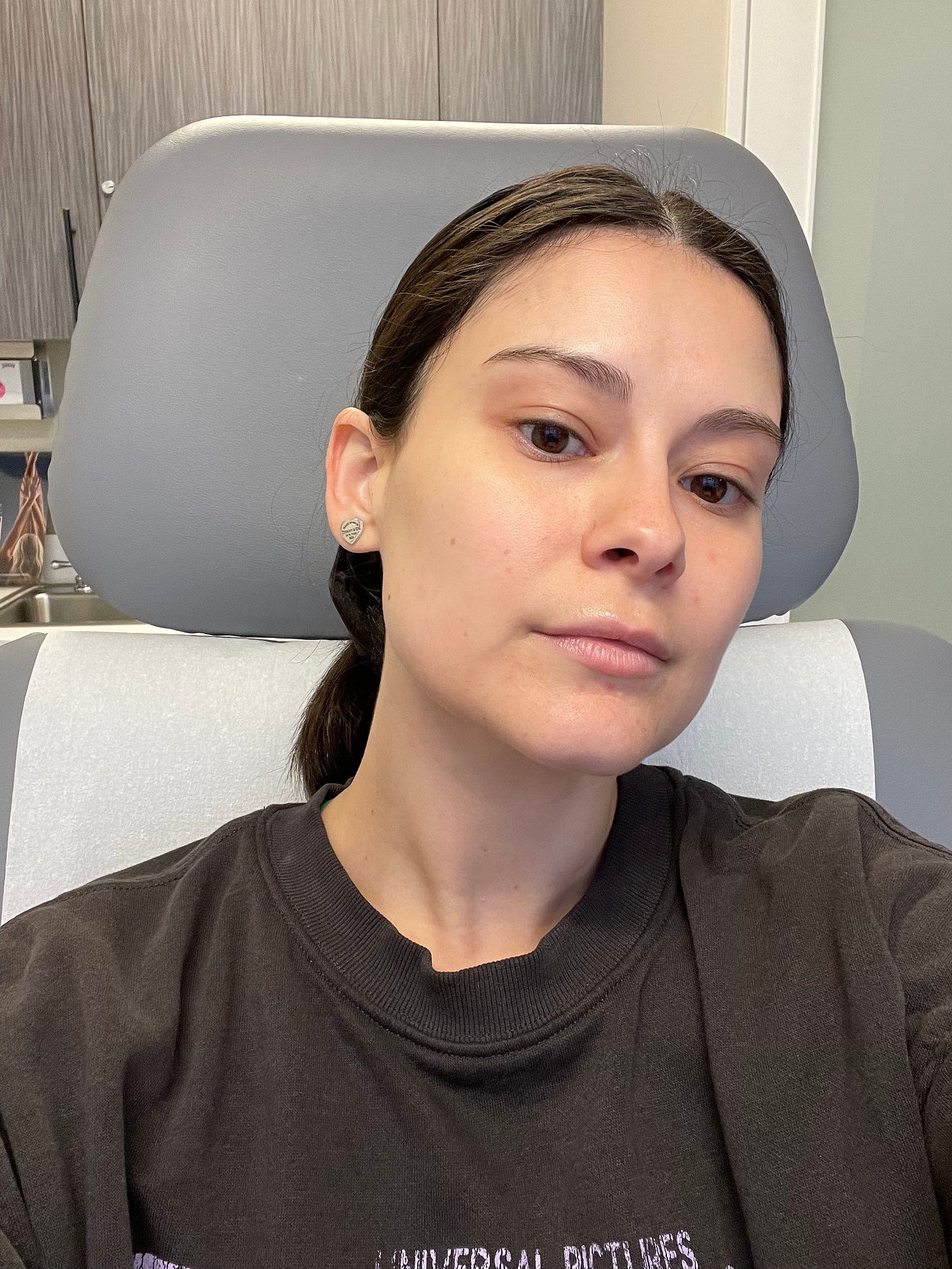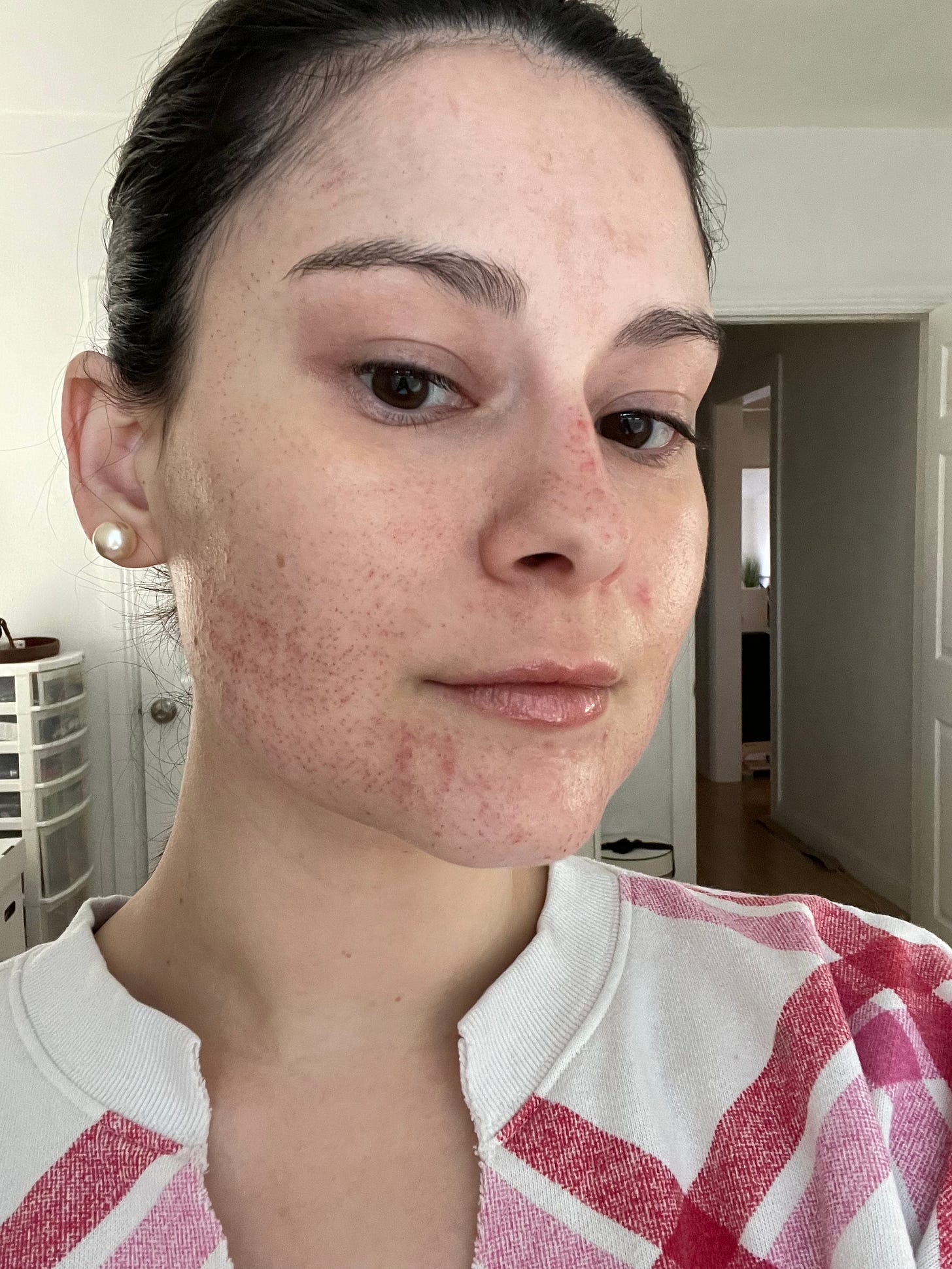I tried Morpheus8, the torture device disguised as a skin-tightening treatment
When stepping out of your comfort zone backfires.
The key to beauty requires a numbing cream, drops of your blood, and days of isolation. And no, I’m not describing a witch’s brew from the 1600s either. It’s the potion for Morpheus8, a celebrity-favorite treatment that promises to tighten your skin, reduce fine lines, and add radiance to your complexion. But before you can get your hands on this youthful glow, you have to endure pain, torture, and agony.
At least, that has been my experience.
Ahead of my appointment at Dr. Ashkan Ghavami’s office in Beverly Hills—where stars like Victoria Beckham, Kim Kardashian, and Khloe Kardashian get work done—I was giddy to try Morpheus8. Sure, I knew beforehand that it was painful (after all, Kim described it as such during her treatment), but I wanted to experience it for myself and understand the hype. Plus, (and not to sound cheesy) my appointment symbolized a new era for me. I figured it was time to step out of my comfort zone and do something I wouldn’t have had the guts to do. Admittedly, I’m a simple treatment girly—I love an old-fashion facial. So, I went in for Morpheus8 with excitement and wonder.
At Dr. Ghavami’s, I sat in a room that looked more like a glam studio than a doctor’s office. The space featured plush amethyst-colored chairs with gold lining, a giant trifold mirror, and three floor-to-ceiling windows that showcased the gorgeous palm trees and elegant architecture in the heart of Beverly Hills. I can see why celebrities come here, I thought, this feels rich.
Within minutes, I met with one of the plastic surgeons to discuss my skin concerns and the areas I wanted to focus on during the treatment—my cheeks and nose. But before laying down on the examination table, he rubbed numbing cream all over my face. As I waited for the lidocaine to kick in (about 45 mins), I read The Picture of Dorian Gray—it’s my all-time favorite book that I try to read every year. However, the irony wasn’t lost on me considering vanity is a central theme.
Once the numbing cream was wiped off with alcohol wipes, I was escorted to a new room, one that looked like a glamorous torture chamber, where laughing gas was placed to my left and the Morpheus8 machine to my right. The device, which pairs microneedling with radiofrequency, is like a nail-gun on steroids, as it features a plate of 24 needles coated in gold (of course) that range from 0.5 mm to 8 mm. The idea is that the combination of microneedling and radiofrequency creates a series of micro-injuries that trigger the body’s natural response to stimulate the production of collagen and elastin. Each session includes four rounds, with the longest needlepoints being administered first.
Throughout the treatment I felt the needles stamping inside my skin, the same way a stapler pinches thick sheets of paper. By the second round, I had to stop the treatment entirely and ask for the nitrous oxide. After about 15 minutes (which felt like an eternity), the treatment was finally over. I walked over to a floor-length vanity mirror with horror in my eyes. Blood oozed out of the tiny needlepoint wounds all over my face, which also looked sunburned and battered. The only thing I could do was laugh to keep myself from tearing up. Afterward, a Saran wrap-like mask was placed on top of my skin to both seal the blood and protect my skin from the open wounds. Once it dried down, however, I looked like one of Dexter Morgan’s victims.
Throughout the rest of the day, my head throbbed, my cheeks swelled up, and I felt utterly miserable. Day two proved to be worse, as tomato-red track marks formed across my face, making it appear as if I had been beaten with a meat mallet. (Apparently, these are all normal side effects.) What makes Morpheus8 more unbearable, however, is the fact that there are so many post-treatment rules: You can’t take any NSAID medications to relieve the pain, you can’t have any kind of sun exposure for 14 days, you can’t use certain serums or moisturizers to heal the wounds, etc. It’s a very isolating experience. Not to mention, my confidence also plummeted. I’ve never been more insecure about my appearance. Between the track marks on my cheeks, which look like I got ran over by a tractor, to the white heads sprouting on top of the wounds, this ugly duckling phase is a dagger to the ego.
Although I’m currently on day five, and won’t see my symptoms subside for about another week or so, it’s hard to comprehend that I’ll have tight, glowing skin by the end of this. And let’s just say that after three months, when the results of the treatment really start showing (according to the plastic surgeon), that I wake up with an ethereal glow Aphrodite herself would envy, the painful and tortuous nature of the treatment just doesn’t feel worth it to me. Side note: This goes without saying, but my issue is with the treatment itself and not the way it was administered at Dr. Ghavami’s clinic. In fact, I actually feel they’ve gone above and beyond to check in on my progress. And while I’m sure some patients don’t mind this ugly period because they know the results are worth suffering for, I can’t imagine going through this again (after all, three sessions are recommended for Morpheus8 to see the best outcome). For me, it’s important to have skincare practices that make me feel good about myself the entire time—not worse, then a little bit better.
The upside to all of this is that I don’t feel the need to step out of my comfort zone in the New Year—at least for the month of January. Moreover, being the guinea pig in this situation not only gave me clarity about the goal of my newsletter, but it’s pushed me further into my quest on why we are willing to do these things for beauty. There’s a reason we fall victim to these trends and treatments—maybe we’re seduced by the promises of youth and radiance, or maybe we feel pressured to fit it, or maybe the unrealistic standards society has normalized makes it impossible to avoid. Either way, I’m on a mission to understand why beauty is pain.








